Yeon Soo Lee
Segmentation of Shoulder Muscle MRI Using a New Region and Edge based Deep Auto-Encoder
Aug 26, 2021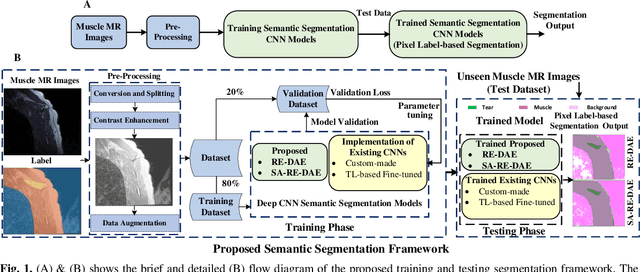

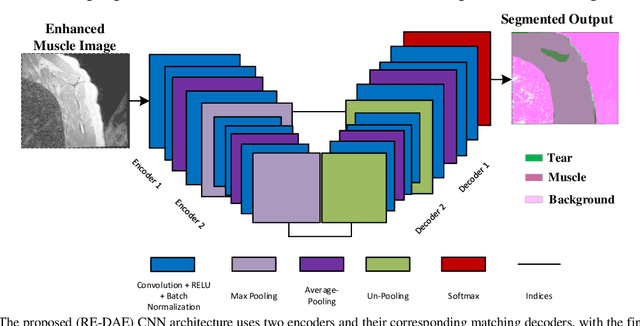

Abstract:Automatic segmentation of shoulder muscle MRI is challenging due to the high variation in muscle size, shape, texture, and spatial position of tears. Manual segmentation of tear and muscle portion is hard, time-consuming, and subjective to pathological expertise. This work proposes a new Region and Edge-based Deep Auto-Encoder (RE-DAE) for shoulder muscle MRI segmentation. The proposed RE-DAE harmoniously employs average and max-pooling operation in the encoder and decoder blocks of the Convolutional Neural Network (CNN). Region-based segmentation incorporated in the Deep Auto-Encoder (DAE) encourages the network to extract smooth and homogenous regions. In contrast, edge-based segmentation tries to learn the boundary and anatomical information. These two concepts, systematically combined in a DAE, generate a discriminative and sparse hybrid feature space (exploiting both region homogeneity and boundaries). Moreover, the concept of static attention is exploited in the proposed RE-DAE that helps in effectively learning the tear region. The performances of the proposed MRI segmentation based DAE architectures have been tested using a 3D MRI shoulder muscle dataset using the hold-out cross-validation technique. The MRI data has been collected from the Korea University Anam Hospital, Seoul, South Korea. Experimental comparisons have been conducted by employing innovative custom-made and existing pre-trained CNN architectures both using transfer learning and fine-tuning. Objective evaluation on the muscle datasets using the proposed SA-RE-DAE showed a dice similarity of 85.58% and 87.07%, an accuracy of 81.57% and 95.58% for tear and muscle regions, respectively. The high visual quality and the objective result suggest that the proposed SA-RE-DAE is able to correctly segment tear and muscle regions in shoulder muscle MRI for better clinical decisions.
Classification and Region Analysis of COVID-19 Infection using Lung CT Images and Deep Convolutional Neural Networks
Sep 16, 2020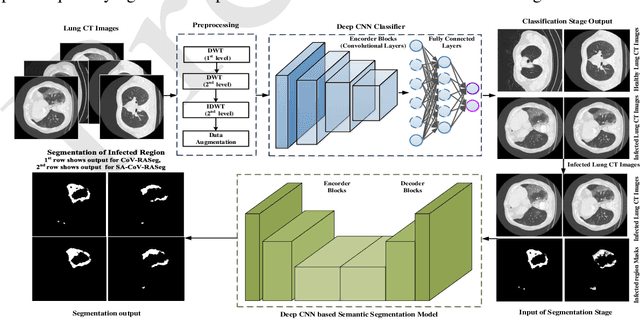
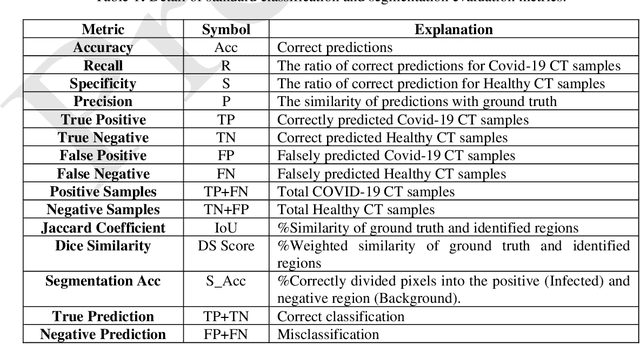
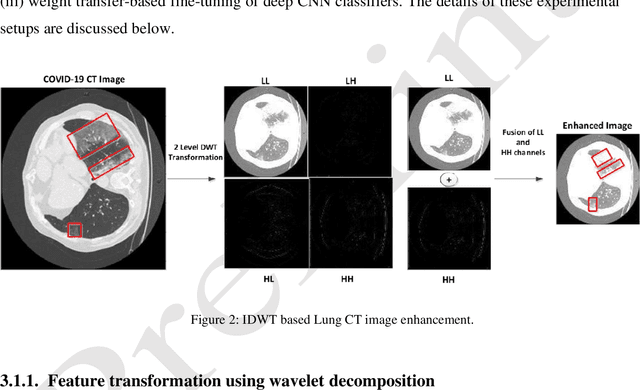
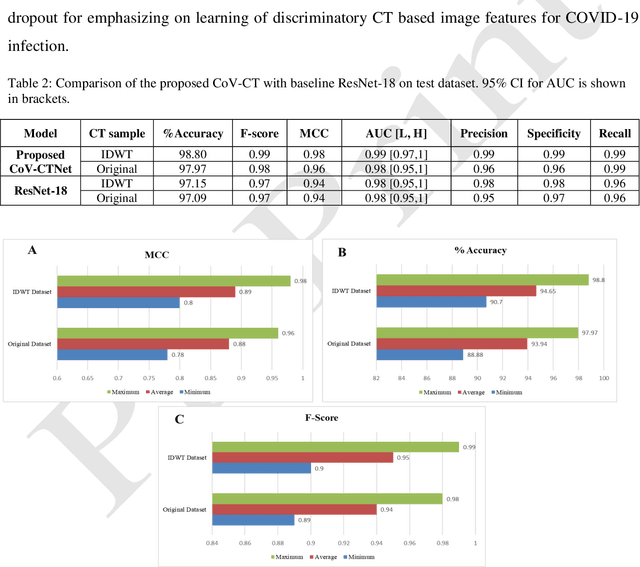
Abstract:COVID-19 is a global health problem. Consequently, early detection and analysis of the infection patterns are crucial for controlling infection spread as well as devising a treatment plan. This work proposes a two-stage deep Convolutional Neural Networks (CNNs) based framework for delineation of COVID-19 infected regions in Lung CT images. In the first stage, initially, COVID-19 specific CT image features are enhanced using a two-level discrete wavelet transformation. These enhanced CT images are then classified using the proposed custom-made deep CoV-CTNet. In the second stage, the CT images classified as infectious images are provided to the segmentation models for the identification and analysis of COVID-19 infectious regions. In this regard, we propose a novel semantic segmentation model CoV-RASeg, which systematically uses average and max pooling operations in the encoder and decoder blocks. This systematic utilization of max and average pooling operations helps the proposed CoV-RASeg in simultaneously learning both the boundaries and region homogeneity. Moreover, the idea of attention is incorporated to deal with mildly infected regions. The proposed two-stage framework is evaluated on a standard Lung CT image dataset, and its performance is compared with the existing deep CNN models. The performance of the proposed CoV-CTNet is evaluated using Mathew Correlation Coefficient (MCC) measure (0.98) and that of proposed CoV-RASeg using Dice Similarity (DS) score (0.95). The promising results on an unseen test set suggest that the proposed framework has the potential to help the radiologists in the identification and analysis of COVID-19 infected regions.
Transfer Learning and Meta Classification Based Deep Churn Prediction System for Telecom Industry
Jan 18, 2019



Abstract:A churn prediction system guides telecom service providers to reduce revenue loss. Development of a churn prediction system for a telecom industry is a challenging task, mainly due to size of the data, high dimensional features, and imbalanced distribution of the data. In this paper, we focus on a novel solution to the inherent problems of churn prediction, using the concept of Transfer Learning (TL) and Ensemble-based Meta-Classification. The proposed method TL-DeepE is applied in two stages. The first stage employs TL by fine tuning multiple pre-trained Deep Convolution Neural Networks (CNNs). Telecom datasets are in vector form, which is converted into 2D images because Deep CNNs have high learning capacity on images. In the second stage, predictions from these Deep CNNs are appended to the original feature vector and thus are used to build a final feature vector for the high-level Genetic Programming and AdaBoost based ensemble classifier. Thus, the experiments are conducted using various CNNs as base classifiers with the contribution of high-level GP-AdaBoost ensemble classifier, and the results achieved are as an average of the outcomes. By using 10-fold cross-validation, the performance of the proposed TL-DeepE system is compared with existing techniques, for two standard telecommunication datasets; Orange and Cell2cell. In experimental result, the prediction accuracy for Orange and Cell2cell datasets were as 75.4% and 68.2% and a score of the area under the curve as 0.83 and 0.74, respectively.
 Add to Chrome
Add to Chrome Add to Firefox
Add to Firefox Add to Edge
Add to Edge